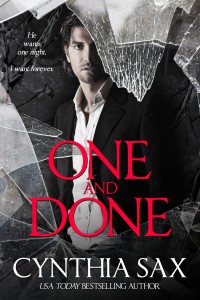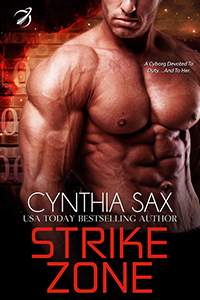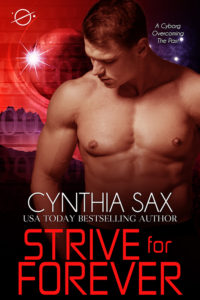Note: In this post, for simplicity reasons, I’ll use couple to refer to the romantic relationship. Your ‘couple’ might be a threesome. It might be five women and one alien. The thinking should apply to all relationship constructs. I’ll also refer to a hero and a heroine. The same thinking can apply to two heroes in love or five vampires in love or any other combination/types of characters.
The sole ‘rule’ of writing romance is that the couple has a romantic happy ever after or a romantic happy for now at the end of the story. What this means is they’re in love and reading buddies believe this love is going to last.
Simply having the couple say “I love you” won’t achieve this. We’ve all said things we didn’t mean (like telling people we’re ‘fine’ when we feel like shit). We’ll all been lied to. The words aren’t enough.
Writers have to show love also.
This is reflective of reality.
“Dr. Albert Mehrabian, author of Silent Messages, conducted several studies on nonverbal communication. He found that 7% of any message is conveyed through words, 38% through certain vocal elements, and 55% through nonverbal elements (facial expressions, gestures, posture, etc).”
How To Show Love
There are internal sensations when you’re in that character’s point of view. The hero’s pulse races when the heroine is near. Her stomach flutters. She gets tingles when he touches her (this sometimes happens when the Dear Wonderful Hubby touches me). He loses his train of thought when she looks at him. She feels safe with him. Tension eases from his shoulders when she’s in the same room.
There are the physical actions. The hero brushes a strand of hair away from the heroine’s face. He lowers his voice when he talks to her. When she walks in the room, she captures his complete attention. He anticipates her needs, pulling out a chair before she sits, bringing her a cup of coffee, prepared the way she likes, when they have a meeting.
I usually get a good indication for how people feel about each other by how they stand or sit near each other. Couples in love naturally move or lean into each other. The hero rests his forehead against the heroine’s. The heroine leans back into the hero. The hero, in a crowded party, gradually drifts toward the heroine’s corner of the room.
The Transition From Hate To Love
The power of non-verbal communication is we can use it to show the gradual transition from indifference/hate (paired with lust) to love (ideally still paired with lust – grins). As the relationship progresses and the love builds, the non-verbal clues become more and more pronounced.
In Chasing Mayhem, Mayhem and Imee are adversaries. She’s a Retriever, a bounty hunter for the Humanoid Alliance. He’s her target. They physically fight. In the early scenes, Imee doesn’t pull her punches. She knees Mayhem in the groin, hard (Mayhem, being the wild cyborg he is, loves that she does this). As their relationship progresses, Imee plays nicer and nicer, choosing not to inflict pain on her cyborg.
Love In The Black Moment
We can also use non-verbal communication to show there’s still love in the midst of the black moment, the point in the story where everything goes wrong. This is especially important if our black moment is close to the end of the story. We want to show there’s some love left to be saved.
In One And Done, Smoke is extremely angry and upset with something Jenella has done. His actions, however, tell her (and readers) he still cares.
I chatter about nonsense—my job, my childhood, my adventures with Azure. Smoke says nothing, driving stone-faced.
But he doesn’t turn on the radio, doesn’t try to drown me out.
And he leans slightly toward me.
He’s like Woofer. Both of them say more with their actions than their words. Both of them have been hurt badly.
Both of them need love.
A Checklist I Use
To ensure I’m not relying on the words, I’ll often refer to The 5 Love Languages as a checklist when I revise my story. These are the five ways people usually give or receive love (and can be very helpful in our real relationships).
Has the hero said the words (Words Of Affirmation)?
This should, ideally, be “I love you”. Many readers won’t believe the hero feels the love unless these three words are spoken.
If that’s not possible (and sometimes it isn’t), it might be the hero’s equivalent, something he has never said to another being.
Has the hero done something for the heroine (Acts Of Service)?
This ‘something’ shouldn’t benefit him. His sole reason for doing it is to make the heroine happy.
For example, in Defying Death, Death carefully cuts Tifara’s nutrition bars into squares. This is an act of love for him.
He had always loved her. She simply hadn’t seen it.
Tifara gazed at the squares Death sliced so diligently with his dagger. The Erinomean girl had offered him pieces of nutrition bars. That had been his first experience with love.
And now he offered them to her. He sheathed the dagger and slid the squares toward her. “Eat.”
“I love you too.” She tossed one into her mouth.
His eyes gleamed.
Has the hero given the heroine a token of his love (Receiving Gifts)?
I love it when the token is something personal, unique, meaningful for the two of them. The billionaire hero gives his heroine a necklace he bought for her the weekend they met. He’d been holding onto it for years, waiting for her to be ready. Death’s gift of the nutrition bars is definitely a token of his love.
Has the hero chosen to spend time with the heroine (Quality Time)?
The workaholic hero takes the day off to hold his heroine’s hand as she visits her sick mom. The cyborg hero forgoes a mock battle to plant seedlings with his botanist heroine.
Has the hero touched the heroine in a loving way (Physical Touch)?
This is touching without the possibility of sex. The hero kisses the back of the heroine’s neck and then walks away. In the midst of reviewing a report, he picks up her hand and brushes it over his cheek.
It isn’t essential that all of the love languages are represented but the more that are present in the story, the more readers tend to believe in the happy ever after.
How have you shown the love in your stories?
Subscribe To My Release Day Newsletter: http://tasteofcyn.com/2014/05/28/newsletter/
He wants one night. I want forever.
Hit it and quit it—that’s Smoke Sheridan’s relationship philosophy. The tall, dark, and dangerous club owner never spends more than one night with any woman. He seduces the broken-hearted, leaving them with smiles on their faces and a sexual confidence other men can’t resist.
I need his services.
My boyfriend of four years dumped me because I’m a lousy lay. Smoke can help me win him back, teach me how to make my man writhe in ecstasy. I’ll show him such bliss, he’ll bellow my name in the dark of the night, want me with an all-consuming desire.
This sounds like a great plan. Except I see the loneliness in Smoke’s eyes, feel the wistfulness in his touch, experience the wanting in his embrace. The player isn’t as shallow as he appears.
And I’ve never been good at letting go.
One And Done contains inappropriate humor, very bad pickup lines, a BBW heroine who doesn’t know what she’s doing and a player who thinks he does.
This is a standalone story.
Buy Now:
On Amazon US: https://www.amazon.com/One-Done-Cynthia-Sax-ebook/dp/B01FOVMF70
On Amazon UK: https://www.amazon.co.uk/One-Done-Cynthia-Sax-ebook/dp/B01FOVMF70
On ARe: https://www.allromanceebooks.com/product-oneanddone-2040641-340.html
On Barnes & Noble: http://www.barnesandnoble.com/w/one-and-done-cynthia-sax/1123809444
On Kobo: https://store.kobobooks.com/en-us/ebook/one-and-done-1







